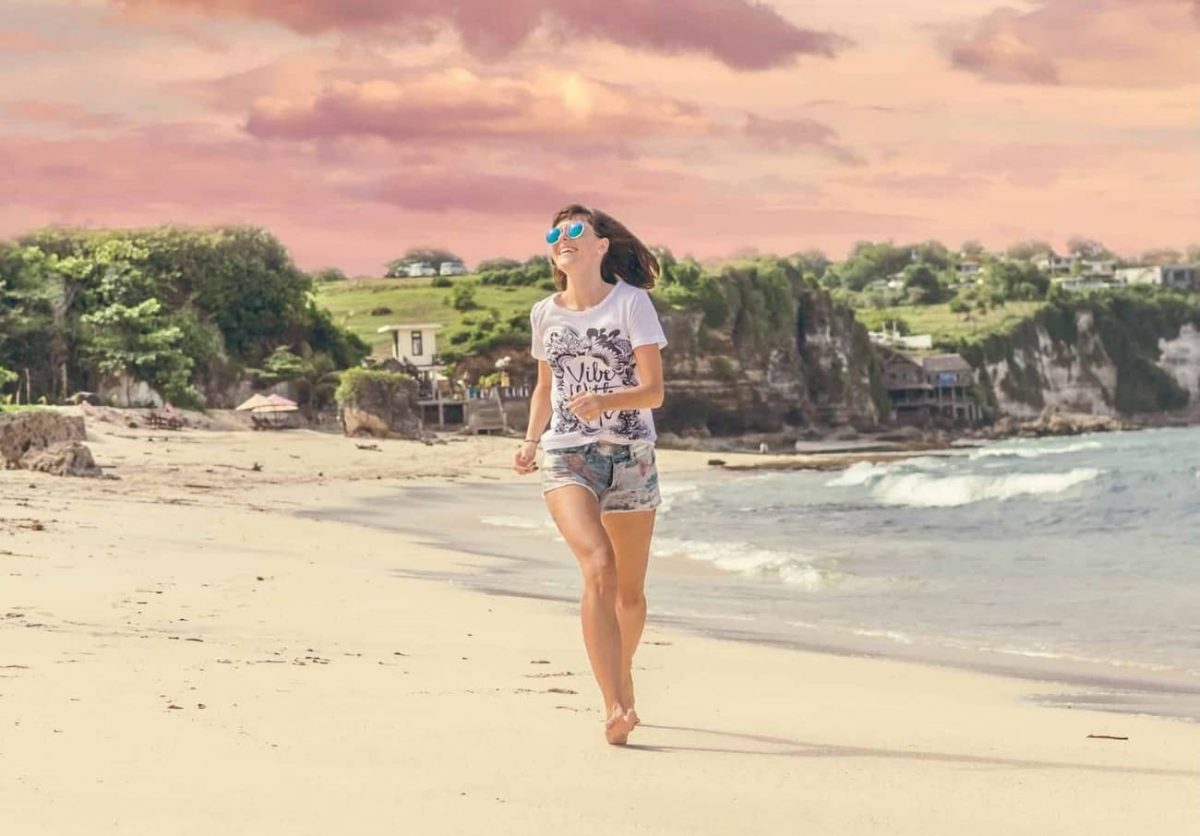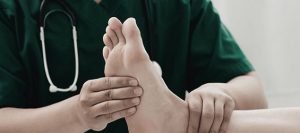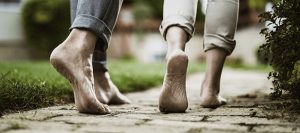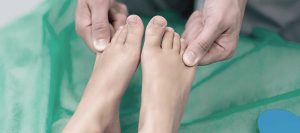
Running barefoot is an increasingly popular alternative to hitting the track or trail in high-tech running shoes, but it isn’t new.
When our ancient ancestors were trying to get back to their caves and away from predators, they simply called it “running.”
While our forebears may not have known it, barefoot running or doing so in “minimalist” shoes – which are more like gloves for the feet rather than shoes – may offer benefits besides not being eaten.
Some famous 20th Century Olympians and marathoners like Zola Budd were known for running barefoot, but the modern barefoot running phenomenon can be traced back to a 2010 study from Harvard University that was published in the magazine nature.
Noting that “for most of human evolutionary history, runners were either barefoot or wore minimal footwear such as sandals or moccasins with smaller heels and little cushioning relative to modern running shoes,” the researchers “wondered how runners coped with the impact caused by the foot colliding with the ground before the invention of the modern shoe.”
What they found suggested that barefoot running actually resulted in lower impacts on the feet and body thus reducing the chances of injury.
That may seem counterintuitive in a world which tells us we need cushioning and shock-absorption in the form of expensive shoes.
But the different way feet strike the ground barefoot can change the mechanics of how we run in a positive way.
3 Facts About Barefoot Runners
Specifically, the Harvard study revealed that:
- “habitually barefoot endurance runners often land on the fore-foot (fore-foot strike) before bringing down the heel, but they sometimes land with a flat foot (mid-foot strike) or, less often, on the heel (rear-foot strike). In contrast, habitually shod runners mostly rear-foot strike, facilitated by the elevated and cushioned heel of the modern running shoe.”
- “Even on hard surfaces, barefoot runners who fore-foot strike generate smaller collision forces than shod rear-foot strikers. This difference results primarily from a more plantarflexed foot at landing and more ankle compliance during impact, decreasing the effective mass of the body that collides with the ground.”
- “Fore-foot- and mid-foot-strike gaits were probably more common when humans ran barefoot or in minimal shoes and may protect the feet and lower limbs from some of the impact-related injuries now experienced by a high percentage of runners.”
Barefoot running or running in minimalist shoes is not recommended for those who suffer from plantar fasciitis, tendonitis, flat feet, bunions or hammertoes.
Even folks without such problems may not be suited for running under any circumstances.
If you are considering trying it, do so carefully and gradually.
You’ll need to toughen up the skin on the bottom of your feet and get used to the different stride involved.
Runners wanting to join the barefoot running bandwagon are advised to consult with their physician or podiatrist first.
Call JAWS Podiatry Today to Schedule an Appointment
At JAWS Podiatry in Hollywood, Florida, we know how painful and frustrating foot and ankle problems can be.
We utilize the most advanced and non-invasive techniques to reduce foot and ankle pain and speed recovery.
Please call us today at (954) 922-7333 or contact us online to schedule a consultation.
- The Life-Changing Power of Cosmetic Foot Surgery - February 27, 2023
- What Are The Most Common Pediatric Foot Conditions? - October 5, 2020
- 4 Important Things To Know Before Having Foot Surgery - September 21, 2020



